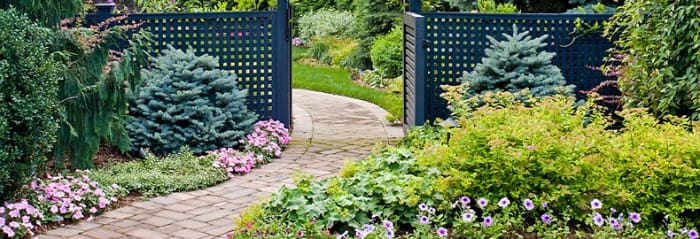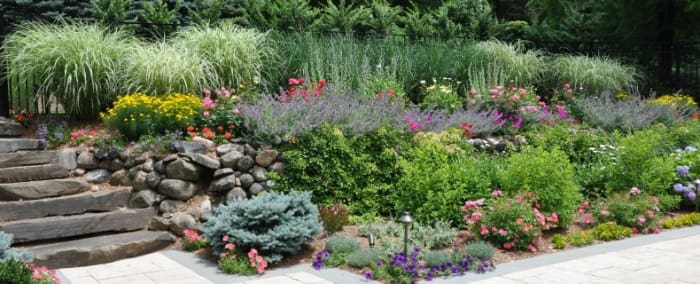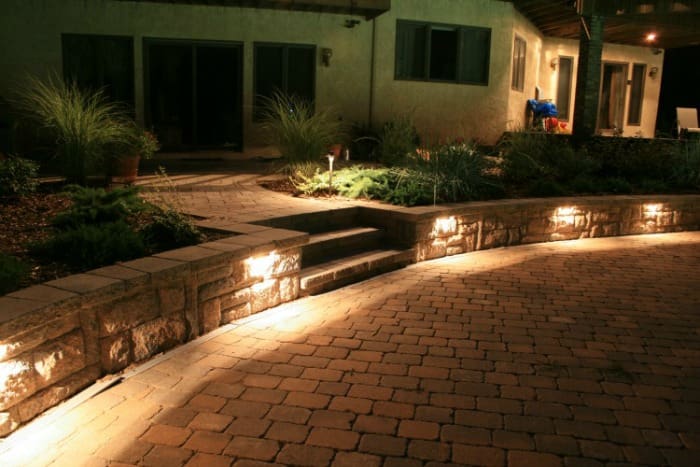Your front yard landscape design has a big impact on your home’s curb appeal and property value. If you’re planning to sell your home for the best possible price, it’s important to create a landscape that is green, healthy and well-maintained to attract potential buyers. Before you list your home, consider these unique design features that will wow buyers and increase your home’s value.
Your front yard is the first thing people see when they arrive, so it should highlight the style and character of your home and make a bold statement. Add a few of these landscaping and hardscaping features to create an inviting entrance that will excite potential buyers to see what’s behind the front door.
Outdoor Walkways
Walkways are an important part of your front yard landscape design. A beautiful walkway provides an aesthetic way for you and your guests to get to your front door. When designing a front yard walkway in NJ, the width, shape and paving materials are important factors.
- Width – Whether your walkway connects the street or driveway to your front door, the width of the walkway is important for safety and visual effect. Your walkway should be wide enough for two people to walk side-by-side. A minimum of four feet is required, but five feet is better if you have space.
- Shape – The style of your home and size of your yard will impact shape. If your home is a colonial, has a more formal style or has a small front yard, a simple, straight walkway will look best. If your home is a cottage or ranch, has a more casual style or has a large front yard, consider a curved walkway to add visual interest. Keep in mind that you should limit the curves or people will tend to cut through the lawn.
- Paving Materials – When selecting walkway materials, choose materials that complement your home’s style, features and architectural materials. If your house is brick, a brick or stone walkway with a brick border is a good choice. Note that solid-poured surfaces or pavers will create a safer footpath than irregular-shaped stepping stones or packed gravel.

A Front Porch
If you have a front porch, it may be time to update the style. If you don’t, it may be worth your while to build one. Adding a front porch to your home or improving an existing one can create a sense of arrival and significantly increase your home’s value. Although entry porches date as far back as ancient Roman times, today they serve three important purposes:
- They emphasize a home’s entrance and frame the front door
- They provide a protected transition between outdoors and indoors
- They serve as a gathering place for family and friends
When building a new front porch or renovating an existing one, make sure that the style and materials complement your home’s architecture. A landscape professional can help you integrate the front porch into your home, so it appears that it was an original feature rather than an add-on.
Garden Beds
Roll out the welcome mat with a blooming front yard landscape design to create a stunning entrance to your home. By creating garden beds full of colorful trees, flowering shrubs, and annuals and perennials that bloom throughout the year, guests and potential buyers will feel welcome as soon as they arrive.
- Create Scale – When planning your garden beds, make sure beds are large enough to accommodate your desired mix of plants. To create proper scale, planting beds should span at least half of the width of your house or extend from the house to the front sidewalk. Large beds should be anchored with trees and shrubs that provide height and depth.
- Create Order – To give your garden beds a sense of order, limit the species of plants you choose. Select one or two types of trees, three to five different shrubs and five to 10 types of annuals and perennials. Plant similar species in groups and repeat them throughout the front yard along walkways, driveways and different garden beds.
- Create Year-Round Interest – Since your garden beds will look sparse in late fall and winter, plant evergreen trees and shrubs for greenery and texture throughout the year. You can also plant crabapple trees and viburnums that attract birds, bees and butterflies. Talk to your landscape professional about fall and winter bloomers that will add color to your garden beds.

Private Courtyards
A private courtyard provides an intriguing, intimate transition from the street to the serenity of your home. It also provides an outdoor area where you can dine, entertain and relax without neighborhood noises and peering neighbors. A well-designed private courtyard can add curb appeal and value to your Bergen County home.
The most important characteristic for a courtyard in front yard landscape design is an enclosure for privacy. A courtyard can be enclosed with stone walls, wood fencing or shrubs and plants. Depending on the level of privacy you want or need, the walls of a courtyard can be solid or transparent, tall or short. To avoid the feeling of a closed-in fortress, many homeowners prefer low walls or slatted fencing. This creates privacy while letting in some light and a view into the front yard.
- Water Features – A front courtyard is a perfect place for a water feature because the sounds of running water will help to mask street noise. In a formal front yard courtyard, a classic tiered fountain can provide a unique focal point. If the courtyard landscape is casual, a large urn-style fountain will blend into the landscape with a more organic appeal.
- Plants – Plants are key for softening interior and exterior courtyard walls. Shrubs, climbing plants, vines and ornamental grasses work well to soften hardscaping on walls and create interesting borders. You can also use low-container gardens or large decorative pots filled with plants to add softness and greenery to courtyard walls or fencing.
Landscape Lighting
A front yard landscape design is not complete without landscape lighting. It’s an easy, affordable way to convey a soft, inviting atmosphere and enhance property safety after the sun goes down. Landscape lighting can create safe footpaths, gorgeous views and stunning focal points in your front yard. Ambient lighting creates a soft light that covers an entire landscape area while spotlighting puts focus and attention on particular features of the landscape.
- Down-lighting – When lights are aimed downward from a high place, they create a diffused light that gives the feeling of moonlight. In a landscape, down lights are usually installed in trees. As the light filters downward through leaves and branches, it creates a soft glow near the ground.
- Up-lighting – By aiming lights upward onto an architectural feature on the house or into trees, you can create a strong contrast between light and dark. Up-lighting creates dramatic shadows and intriguing effects in a front yard landscape design.
- Cross-lighting – Cross-lighting is used to light a focal point from both sides which eliminate shadows. It’s often used to accent fountains and waterfalls, large boulders and retaining walls or fences. You can also light up the entire tree canopy for stunning effects.
- Pathway lighting – Pathway lights are used along walkways, driveways and garden beds and borders. They are essential for safe footpaths to prevent accidents and injuries. Rather than using pathway lighting alone, combine it with ambient lighting for a more natural look.
- Landscape lighting is available in a variety of LED, halogen and solar fixtures. It’s easy to find styles and finishes that complement your home’s features within a budget you can afford. Talk to your landscape professional about the benefits and effects of landscape lighting for your home.

A good first impression can make a world of difference when you’re selling your home. By increasing your home’s curb appeal and property value with front yard landscape design, you have a chance to influence the opinion of potential buyers before they even step inside your home.

